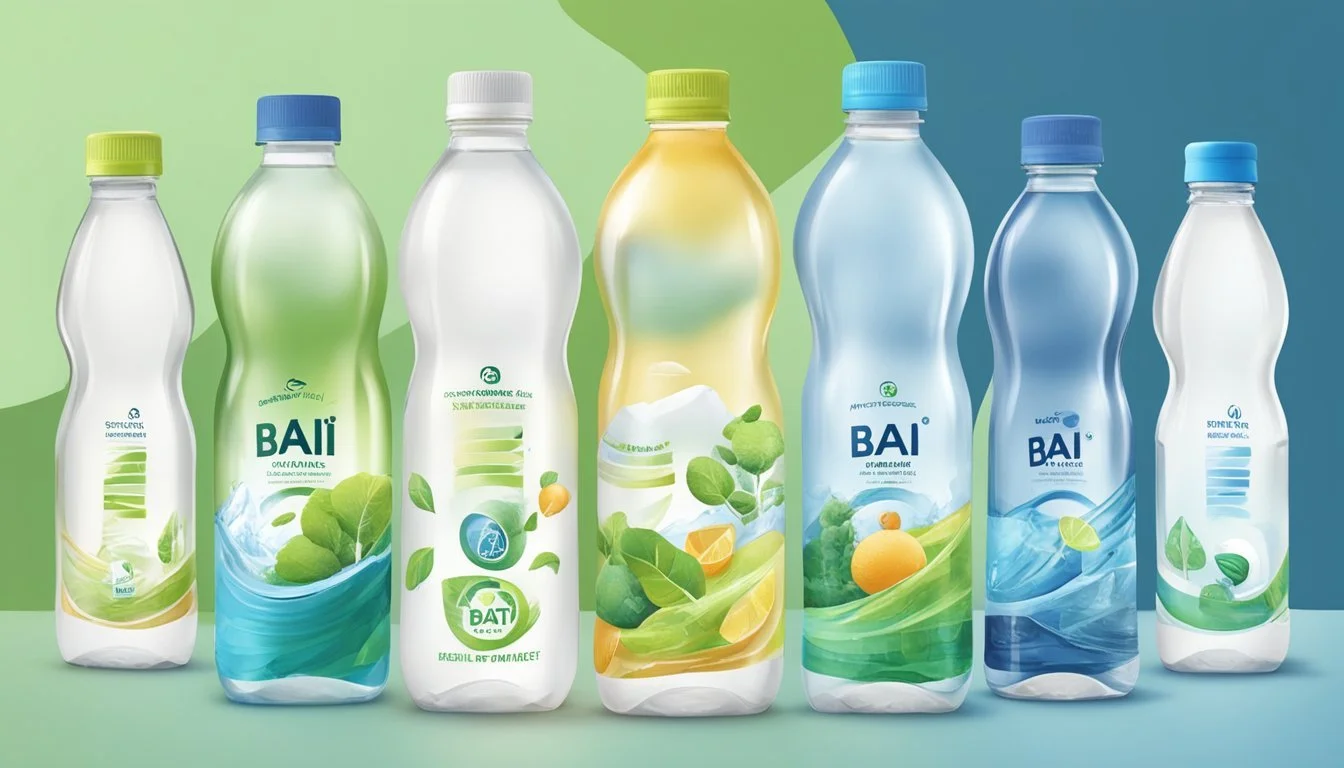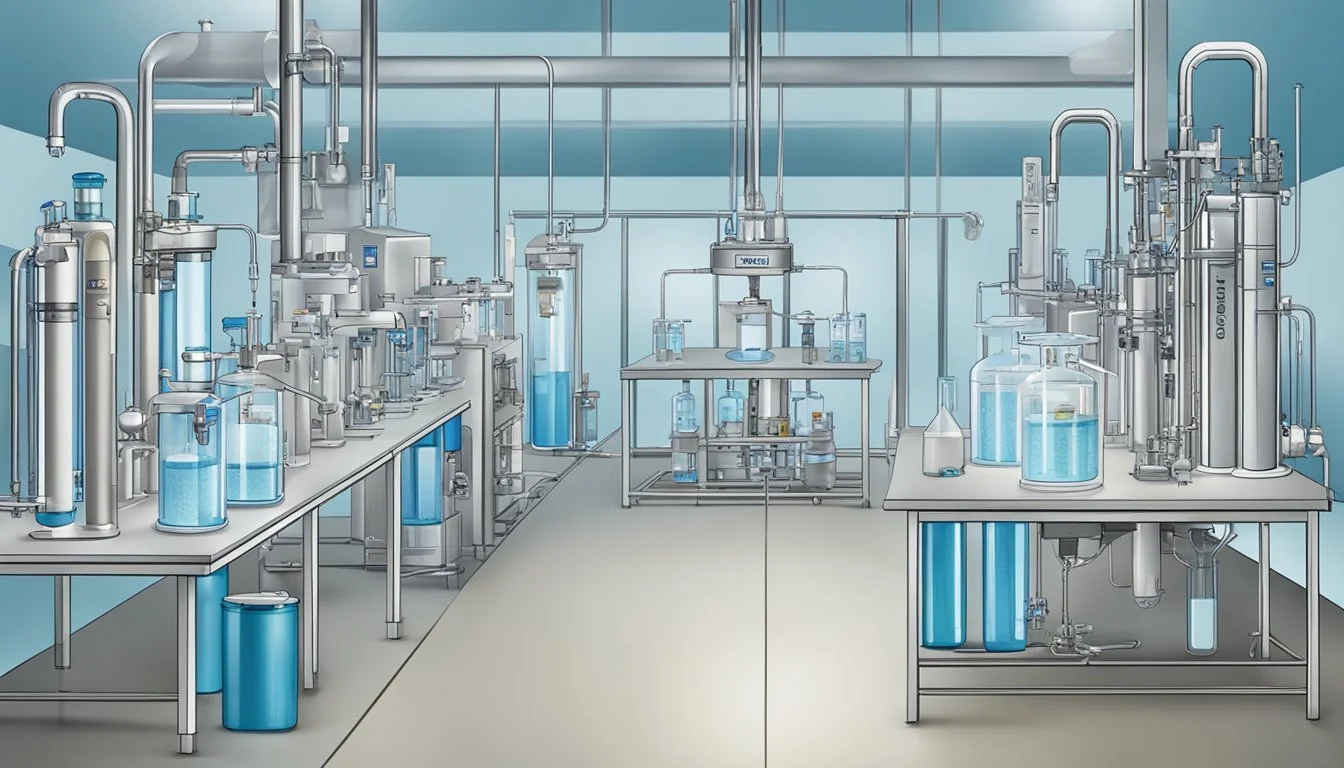Bai vs. Path
Which Bottled Water is Better for Quality and Health?
When deciding between Bai and Path bottled water, consumers must weigh factors like hydration, health benefits, and unique ingredients. Bai water, known for its hydration boost and low-calorie content, contains antioxidants from coffee fruit extract and tea, promoting overall health. On the other hand, Path positions itself as a refillable aluminum bottle brand, emphasizing its sustainability and environmental impact.
Both Bai and Path cater to different consumer priorities. Bai's nutritional appeal includes almost no sugar and added minerals like selenium, which supports immune health. Path's commitment to reducing single-use plastic bottles attracts environmentally conscious buyers while still offering pure, clean hydration.
Ultimately, the choice between Bai and Path depends on individual preferences for health benefits and environmental impact. Bai may be more attractive to those seeking a nutritious, antioxidant-rich drink, whereas Path appeals to those dedicated to sustainability and reducing plastic waste.
Overview of Bai and Path Bottled Waters
Bai and Path bottled waters offer distinct experiences, catering to different consumer needs and preferences. Bai's emphasis on antioxidant-infused flavors contrasts with Path's reusable and eco-friendly approach.
Brand History and Mission
Bai: Founded in 2009, Bai aims to provide healthy and flavorful drinks. Their mission centers on offering beverages that fuse pleasant tastes with beneficial ingredients. Bai is particularly known for its antioxidant infusion drinks, sourced from coffee fruit extract, offering both hydration and health benefits.
Path: Established more recently, Path focuses on sustainability. They market their products with a mission to reduce single-use plastic waste. Path’s strategy involves reusable aluminum bottles that consumers can refill, aligning with their eco-friendly goals.
Product Range and Varieties
Bai: Bai offers a wide range of flavored waters and antioxidant infusion drinks. Key flavors include Brasilia Blueberry, Costa Rica Clementine, and Kula Watermelon. Each drink features minimal sugar (1g per serving) and added vitamins like Vitamin C. Bai's products are gluten-free and contain no artificial sweeteners, appealing to health-conscious consumers.
Path: Path’s product line focuses on pure, clean water. They emphasize their reusable and refillable containers, designed to minimize environmental impact. While they don't offer flavored varieties, their waters are marketed as alkaline and pH balanced, catering to consumers seeking basic hydration with an eco-friendly packaging solution.
Bai and Path both bring unique value propositions to the bottled water market, targeting different consumer preferences regarding health benefits and environmental sustainability.
Nutritional Comparison
This comparison evaluates the nutritional aspects of Bai and Path bottled water, focusing on calorie content, sweeteners, antioxidants, and vitamins.
Calorie Content and Sweeteners
Bai water is low in calories, with each bottle containing only ten calories. It uses natural sweeteners like stevia and erythritol, with just 1 gram of sugar per serving. This makes it a suitable option for those looking to reduce their sugar intake while retaining some sweetness.
Path water, on the other hand, is pure water with zero calories and no added sweeteners or sugar. For those strictly monitoring their calorie consumption, Path water has the clear advantage due to its calorie-free nature.
Bai Water Path Water 10 calories 0 calories 1g sugar 0g sugar Stevia, Erythritol No sweeteners
Antioxidants and Health Benefits
Bai water is infused with antioxidants, particularly from coffee fruit extract. Antioxidants are known for their potential health benefits, such as reducing oxidative stress and improving overall health. The addition of tea extract further boosts the antioxidant profile of Bai.
Path water does not contain added antioxidants. It is simple and clean, appealing to those who prefer their water without any extras. However, this also means it lacks the potential health benefits provided by the antioxidants in Bai.
Vitamin and Mineral Enhancements
Bai water includes added vitamins, such as Vitamin C, which supports immune health. This enhancement adds to its appeal for health-conscious consumers seeking more than just hydration.
Path water keeps things simple with no added vitamins or minerals. Its straightforward composition can be a plus for those who prefer not to have additional ingredients in their bottled water.
In conclusion, while Bai offers added nutritional benefits with vitamins and antioxidants, Path offers a pure, uncomplicated hydration option without any additives.
Flavor Profile and Quality
Bai and Path offer distinct tasting experiences with their unique flavor combinations and quality ingredients.
Natural Flavors and Fruit Infusions
Bai
Bai drinks are known for their unique flavor blends, such as Brasilia Blueberry and Zambia Bing Cherry. The primary ingredient, coffee fruit extract, infuses the water with antioxidants and a noticeable fruity undertone. These drinks are low-calorie and free from artificial sweeteners, making them a popular choice among health-conscious consumers. The taste combines natural fruit flavors with a hint of tea extract, providing a refreshing experience.
Path
Path focuses on delivering pure and clean taste. It does not offer flavored water options, prioritizing natural spring water quality. Each bottle contains highly purified water designed to be crisp and neutral on the palate. Without added flavors, Path aims to appeal to those who prefer classic, unaltered water.
Environmental and Health Safety
The environmental and health impacts of bottled water involve multiple factors, including the bottling process, the source of the water, plastic usage, and sustainability practices.
Bottling Process and Source of Water
Bai sources its water from natural springs, ensuring a pure and refreshing taste. The process includes filtering and infusing the water with antioxidants from coffee fruit and tea extracts, promoting health benefits. Path, on the other hand, primarily offers purified tap water. The purification processes include reverse osmosis, distillation, and UV treatment to ensure safety.
Natural spring water, like Bai's, often contains essential minerals. In contrast, Path’s purified water may lack these minerals but maintains a high level of purity. The difference in water sources can impact both taste and nutritional content.
Plastic Use and Sustainability
Bai uses plastic bottles for its beverages, which raises concerns about environmental impact. Plastic bottles contribute to pollution and have a significant carbon footprint. Alternatives like glass or metal cans are considered more sustainable. Path addresses these concerns by using reusable aluminum bottles that reduce plastic waste.
Plastic leaching chemicals can pose health risks, as highlighted by studies showing the potential harm of plastic ingestion. The use of plastic by Bai contrasts with Path’s sustainable packaging approach, which aims to mitigate environmental damage and promote reuse. Path’s focus on sustainability reflects a growing trend among consumers seeking eco-friendly options.
Bai and Path in the Health-Conscious Market
Both Bai and Path cater to health-conscious consumers by offering beverages that prioritize natural ingredients and low-calorie counts. These features appeal especially to those interested in weight loss and overall well-being.
Nutritional Content for Weight Loss
Bai offers a unique blend with antioxidants from coffee fruit extract and provides just 10 calories per bottle. It contains 1 gram of sugar, making it a low-calorie option. The incorporation of vitamins, such as Vitamin C, supports the health of those mindful of their dietary intake.
Path is marketed as a premium bottled water primarily focusing on purity. It is a zero-calorie option with no added sugars or artificial ingredients, making it ideal for individuals aiming to reduce calorie consumption. This simplicity appeals to those who opt for a straightforward hydration solution without extra nutrients.
Nutritional Metric Bai Path Calories 10 0 Sugar (grams) 1 0 Added Vitamins Yes No Antioxidants Yes No
Potential Risks and Considerations
While Bai provides beneficial antioxidants, the presence of coffee fruit extract and natural flavors may not suit everyone, especially those sensitive to specific ingredients. Health-conscious consumers should review ingredient lists to avoid potential allergens or unwanted additives.
Path offers a more straightforward hydration option, but lacks the additional nutritional benefits found in Bai. This can be seen as a missed opportunity for those seeking more than just hydration. However, its zero-calorie content makes it a safer choice for those wanting to avoid artificial ingredients or added sugars.
Both brands present options that cater to different priorities, allowing consumers to select based on their health and dietary needs.
Comparison of Packaging and Branding
Bai and Path employ different strategies in their packaging and branding, often focusing on sustainability and visual appeal to attract consumers. Their packaging materials and design elements reflect their brand ethos and consumer priorities.
Labeling and Design
Bai emphasizes vibrant, sleek labeling that highlights its antioxidant-infused beverage qualities. The labels are often colorful with clear information about ingredients and health benefits, indicating the presence of antioxidants and vitamins such as Vitamin C. This approach not only makes the bottle attractive but also informative.
In contrast, Path focuses on a minimalist design with a clean and professional appearance. The packaging typically includes minimalistic text and branding logos, offering a sleek aesthetic that appeals to eco-conscious consumers. Path's branding also underscores sustainability, drawing attention to the fact that their bottles are reusable and made from stainless steel.
Size Options and Convenience
Bai offers a variety of sizes to cater to different consumer needs, from single-serve bottles to larger multi-serve options. This flexibility makes it convenient for consumers whether they are on the go or at home. The plastic bottles are lightweight and easily portable, enhancing consumer convenience.
Path, however, specializes in larger, reusable bottles that promote sustainability. These bottles are designed to be refilled multiple times, reducing the need for single-use plastics. This not only aligns with eco-friendly values but also provides long-term convenience for users who prefer to minimize waste.
Both brands offer distinct advantages in terms of packaging and branding, targeting different aspects of consumer preferences.
Purity and Filtration Methods
Bai's and Path's approaches to purity and filtration reveal significant differences in their bottled water products. Understanding these differences helps consumers make informed choices based on their hydration needs.
Filtration Techniques
Bai utilizes advanced filtration methods, often emphasizing the addition of electrolytes which enhance hydration. Their process includes multiple stages, such as microfiltration and reverse osmosis, which remove impurities effectively. These techniques ensure that the water is both pure and consistent in quality.
Path focuses on providing natural spring water with minimal processing. This brand is known for its eco-friendly approach and often relies on natural filtration methods. Path’s water generally undergoes fewer filtration stages, retaining more natural minerals.
pH Balance and Tasting Notes
Bai water is specifically balanced to have a neutral or slightly alkaline pH, typically around 7.5-8.0. This balance can be beneficial for those looking to reduce acidity in their diets. The added electrolytes and antioxidants might slightly alter the taste, providing a mildly flavored profile that some find refreshing.
Path prides itself on offering water with a natural, unaltered taste. The pH of Path's water tends to align more closely with natural spring waters, generally around 7.0-7.5. This pH balance retains the water's inherent taste, which can be described as crisp and clean.
Both brands cater to different preferences in terms of purity and taste, allowing consumers to choose based on their specific hydration needs and taste preferences.
Consumer Perspectives and Market Position
Consumers weigh Bai and Path based on taste, health benefits, and brand perception. The market position of both brands also hinges on visibility and accessibility.
Customer Reviews and Feedback
Bai is frequently praised for its flavored water options, which blend hydration with a low-calorie count. Consumers appreciate the antioxidant infusion that Bai provides. This positions Bai as more than just water, aligning it with health-conscious consumers. The taste, often highlighted in reviews, is a significant factor in consumer satisfaction.
Path focuses on sustainability with its reusable aluminum bottles. Customers find this eco-friendly approach appealing. Reviews often mention the sleek design and practical features of the Path bottle. While Path may not offer the same flavor variety as Bai, its commitment to reducing plastic waste resonates with environmentally conscious shoppers.
Comparison with Other Leading Water Brands
Bai and Path compete in a crowded market of bottled water brands like Smartwater, LIFEWTR, and Fiji. Bai's use of antioxidants and flavors sets it apart from brands like Dasani and Aquafina, who focus on purity and taste. Bai’s premium pricing reflects a unique market position aimed at health-focused consumers.
Path's commitment to sustainability and reusable packaging provides a distinct edge over traditional bottled brands like Evian and Zephyrhills. Though Path lacks flavor options, its eco-friendly stance challenges brands like Voss and Fiji, which also focus on high-quality water but often employ single-use packaging.
In conclusion, both Bai and Path carve out unique niches. Bai excels in health benefits and flavor variety, while Path attracts consumers committed to sustainability.










